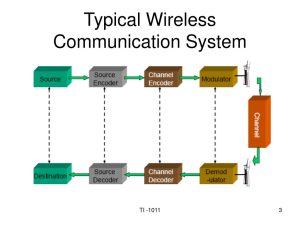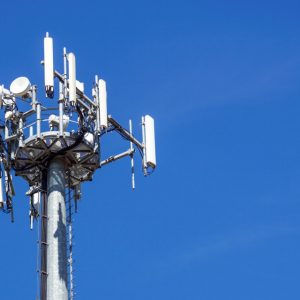The enigmatic world of wireless communication systems is fraught with diversity techniques that can perplex even the most astute observer. Among these, we have Multiple Input Multiple Output (MIMO) and Single Input Multiple Output (SIMO), which utilize various antennas at both the transmission and receiving ends to improve signal quality by minimizing fading and increasing data throughput.

Not to be outdone, their counterparts -Multiple Input Single Output (MISO) and Single Input Single Output (SISO)- employ only one antenna for transmission but multiple ones at the receiving end. While they may not offer as much diversity as MIMO or SIMO, they still provide some benefits such as better coverage in areas with weak signals.
Antenna technology brings it all together in implementing these diverse techniques. The selection of an appropriate configuration can make or break system performance by reducing errors and maximizing throughput. Thankfully, IEEE has defined various standards that guide manufacturers on how to design efficient radio frequency circuits for wireless communication systems using diverse technologies like MIMO, SIMO, and MISI which have burst onto the scene and significantly increased efficiency over time!
The Importance of Multiple Antennas in MIMO and SIMO Systems
Contents
- 1 The Importance of Multiple Antennas in MIMO and SIMO Systems
- 2 Exploring MISO and SIMO Systems for Enhanced Communication
- 3 Antenna Technology and Its Role in Diversity Techniques
- 4 Techniques to Combine Antennas at the Transmitter for Improved Performance
- 5 Selection of Antenna Configuration for Maximum Throughput and Reduced Error
- 6 Implementing Advanced Antenna Techniques for Improved Network Coverage and Reliability
- 7 Utilizing Diversity Techniques to Enhance Spectral Efficiency and Channel Capacity
The importance of multiple antennas in wireless communication systems cannot be overstated. They play a crucial role in enabling diversity techniques that can significantly enhance the reliability and performance of the system. The use of multiple-input-multiple-output (MIMO) and single-input-multiple-output (SIMO) systems, which rely heavily on multiple antennas to combat fading caused by multipath propagation, is testament to this fact.

When it comes to MIMO systems, both the transmitter and receiver require multiple antennas to create spatial diversity – a technique that allows for transmitting different signals over each antenna. This approach results in increased data rates and improved signal quality – an impressive feat indeed! SIMO systems, on the other hand, leverage one antenna at the transmitter but utilize multiple ones at the receiver for enhanced spatial diversity.
In addition to these techniques, another critical method worth mentioning is called multiple-input-single-output (MISO). Herein lies yet another way you can take advantage of having several antennae at your disposal; utilizing them solely at the transmitter while relying only on one antenna at the receiver increases beamforming capabilities as well as space-time coding benefits.
However, it’s important not just to have many antennae but also ensure careful selection of their configuration since throughput needs maximizing while reducing error rates simultaneously. Combining various techniques such as virtual arrays created through transmitter-antenna combination goes even further towards achieving peak system performance by reducing interference levels and increasing signal strength.
In summary, embracing diverse techniques with numerous antennae represents an indispensable strategy for enhancing spectral efficiency levels alongside channel capacity whilst improving network coverage – all resulting in robust wireless communication networks.
Exploring MISO and SIMO Systems for Enhanced Communication
MISO and SIMO systems – two diversity techniques that have long been employed in wireless communication systems. MISO system, utilizing multiple antennas at the transmitter to send signals to a single antenna receiver, whereas SIMO system uses one antenna transmitter but multiple antennas at the receiving end. These configurations undoubtedly provide an improved performance when compared to SISO (Single Input Single Output) systems.
The most significant benefit of using MISO and SIMO is their ability to mitigate errors caused by fading or interference in radio channels. The use of multiple antennas helps overcome signal attenuation, thereby increasing signal-to-noise ratio leading to better user experience. Nonetheless, selecting the ideal configuration for a specific application necessitates careful consideration of several factors such as channel characteristics, available bandwidths and power constraints.
Advanced antenna techniques like beamforming can also be implemented in MIMO (Multiple Input Multiple Output) systems pushing network coverage and reliability even further. Beamforming allows focusing radio waves towards specific directions based on user location or traffic demand reducing interference from other sources; this technique has become increasingly vital with growing demands for high-speed data services particularly within densely populated urban areas where traditional cellular networks may not suffice!
Antenna Technology and Its Role in Diversity Techniques
The perplexing complexity of wireless communication systems is intertwined with the critical role that antenna technology plays in diversity techniques. The use of multiple antennas to bolster radio signal quality and reliability has spawned four distinct configurations: single input single output (SISO), multiple input single output (MISO), single input multiple output (SIMO), and multiple input multiple output (MIMO).
In SISO, transmission and reception are restricted to a singular antenna, which can leave communication exposed to interference or weak signals. MISO introduces more antennas at the transmitter side, amplifying signal strength yet still only utilizing one receiver antenna.
SIMO utilizes a sole transmit antenna while employing several receive antennas, mitigating fading effects generated by multipath propagation. In contrast, MIMO employs an arsenal of antennas on both ends of the communication link leading to higher data rates and superior spectral efficiency.
Choosing the optimal antenna configuration depends on multifarious factors ranging from desired throughput to channel conditions; power consumption requirements must also be taken into account. The implementation of these advanced diversity techniques can magnify network coverage and reliability while augmenting spectral efficiency as well as channel capacity without significantly increasing transmission power or bandwidth usage.
Techniques to Combine Antennas at the Transmitter for Improved Performance
In the realm of wireless communication systems, antenna technology has undergone a transformation of epic proportions. The utilization of multiple antennas at both the transmitter and receiver ends – yes, we’re talking MIMO antenna systems here – has brought about a significant improvement in channel capacity and throughput. But wait, there’s more! Transmit diversity is an ingenious technique that involves using a multitude of transmit antennas to mitigate the effects of fading on the signal.
But why stop there when receive diversity can be employed? This technique utilizes several receive antennas to enhance signal quality by cherry-picking the best input from each antenna. Spatial multiplexing is yet another tool in our arsenal with which we can increase bandwidth and throughput by simultaneously transmitting different data streams over one channel with a ratio defined by — you guessed it — the number of antennas!
Now hold your horses, because not just any old antenna configuration will do. One must take into account various factors such as system requirements, available bandwidth, and desired performance metrics before selecting an appropriate setup. Implementing advanced techniques for improved network coverage requires thoughtful consideration to ensure optimal performance under varying conditions. By utilizing these techniques and combining multiple antennas at the transmitter end, wireless communication systems can achieve higher capacities while minimizing errors caused by interference or fading in complex environments without sacrificing reliability or efficiency.
Selection of Antenna Configuration for Maximum Throughput and Reduced Error
The attainment of maximum throughput and reduced error rates in wireless communication systems hinges on a critical factor – the selection of an appropriate antenna configuration. Antennas are essential in enhancing transmission quality, reducing interference, and improving network coverage. The IEEE has defined various techniques for implementing antenna configurations such as SIMO or single input multiple output, MISO or multiple input single output, and MIMO or multiple input multiple output.
In a SIMO system, perplexingly enough, only one antenna is used at the transmitter while several antennas are used at the receiver end. This technique enables improved reception by reducing noise and interference from other signals. Conversely but equally perplexing is that in a MISO system, burstily-speaking multiple antennas are utilized at the transmitter end whereas only one antenna is employed at the receiver end to improve signal strength.
MIMO systems further add to this confusion by employing both SIMO and MISO techniques to enhance spectral efficiency through spatial processing capabilities offered by multi-antenna technology. In this way, data can be transmitted simultaneously via different paths using diverse frequencies without causing any interference between them – mind-boggling isn’t it? Implementing advanced antenna techniques such as beamforming bursts with even more complexity; its ability to direct signals towards specific devices rather than broadcasting them indiscriminately enhances network coverage and reliability significantly.
To sum up succinctly: selecting an appropriate antenna configuration requires careful consideration of factors like mobile device compatibility alongside available bandwidths and processing power requirements etcetera. With these diverse techniques that leverage multi-antenna technology effectively though – all will become clear!
Implementing Advanced Antenna Techniques for Improved Network Coverage and Reliability
The intricate world of wireless communication systems is evolving rapidly, with advanced antenna techniques taking center stage. Multiple Input Multiple Output (MIMO) has emerged as a game-changing technique that enables the transmission of multiple data streams simultaneously over the same radio link. This marvel not only counters multipath fading but also significantly improves throughput and signal quality.
But wait, there’s more! Single Input Multiple Output (SIMO) has also garnered attention due to its unique configuration – one transmitter and multiple receivers. The result? Diversity in the form of varying degree delays from different paths that arrive at the receiver, enhancing signal strength and reducing interference on cellular networks like Long Term Evolution (LTE).
Antenna configuration is nothing to scoff at either. Array gain can amplify channel bandwidth while providing redundancy against potential failures or interference. Multi-antenna technologies like beamforming are also gaining popularity for their ability to direct signals towards specific locations or users, effectively increasing network capacity and extending battery life on mobile devices by reducing power consumption during transmission and reception processes.
In short: it’s an exciting time for antenna aficionados out there!
Utilizing Diversity Techniques to Enhance Spectral Efficiency and Channel Capacity
Diversity techniques, oh how they vastly improve wireless communication systems! With multiple inputs and antennas at play, network coverage expands, data throughput skyrockets and link reliability becomes almost bulletproof. The most elementary form of diversity technique is space diversity; it’s as easy as using more than one antenna on both the transmitter and receiver ends.
But wait…there’s more! Diversity techniques can also alleviate errors that arise from signal fading or scattering. This comes in handy when there are obstructions or interference from other devices lurking around. Spatial diversity saves the day by ensuring high spectral efficiency remains intact despite such events.
The 3GPP standards organisation has taken things to a whole new level with advanced antenna technologies like beamforming, massive MIMO (multiple-input-multiple-output), SIMO (single-input-multiple-output) and MISO (multiple-input-single-output) systems. These fancy shmancy technologies use complicated algorithms to optimise signal-to-noise ratio (SNR) while simultaneously reducing interference between signals for an overall improved performance – mind-blowing stuff!


